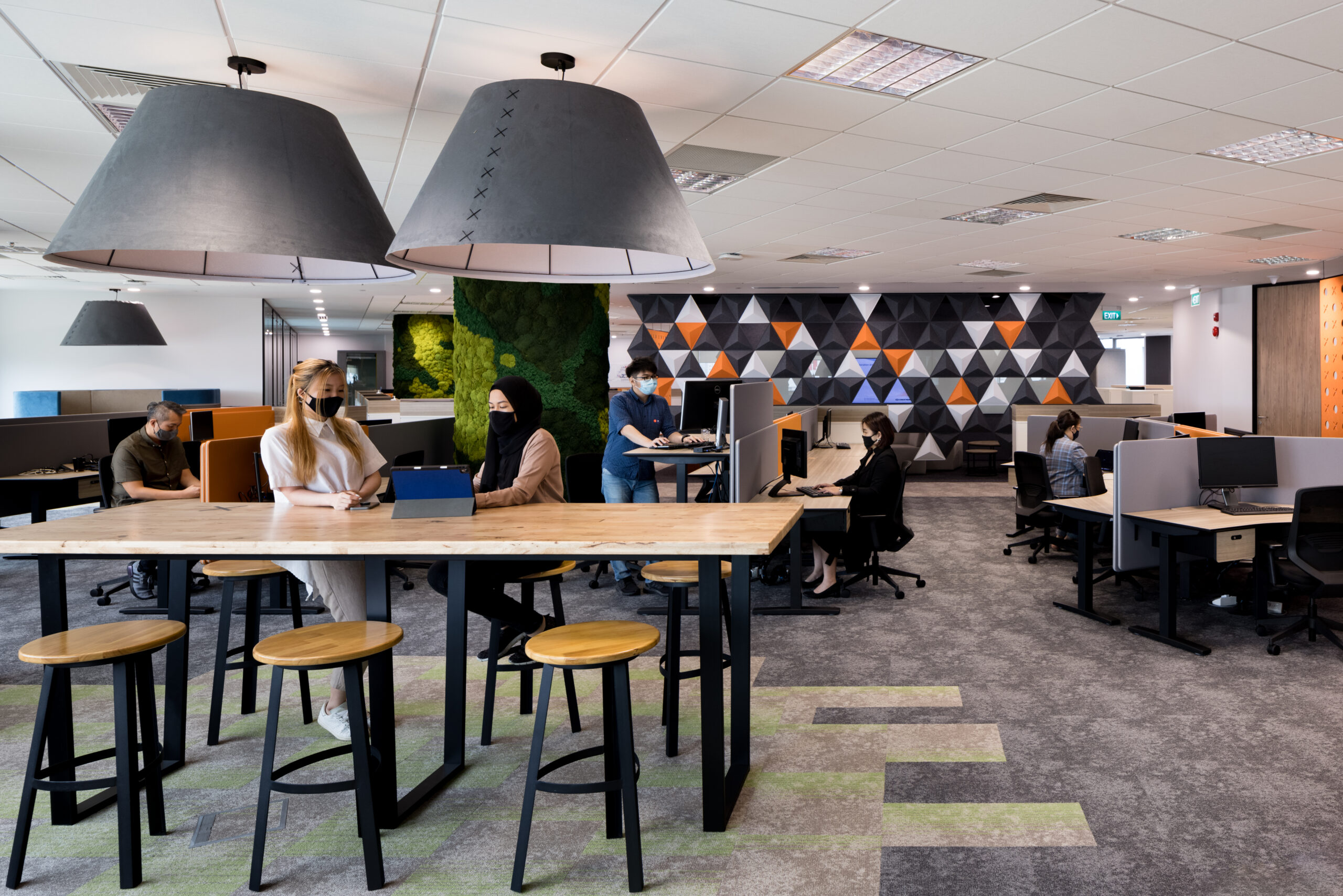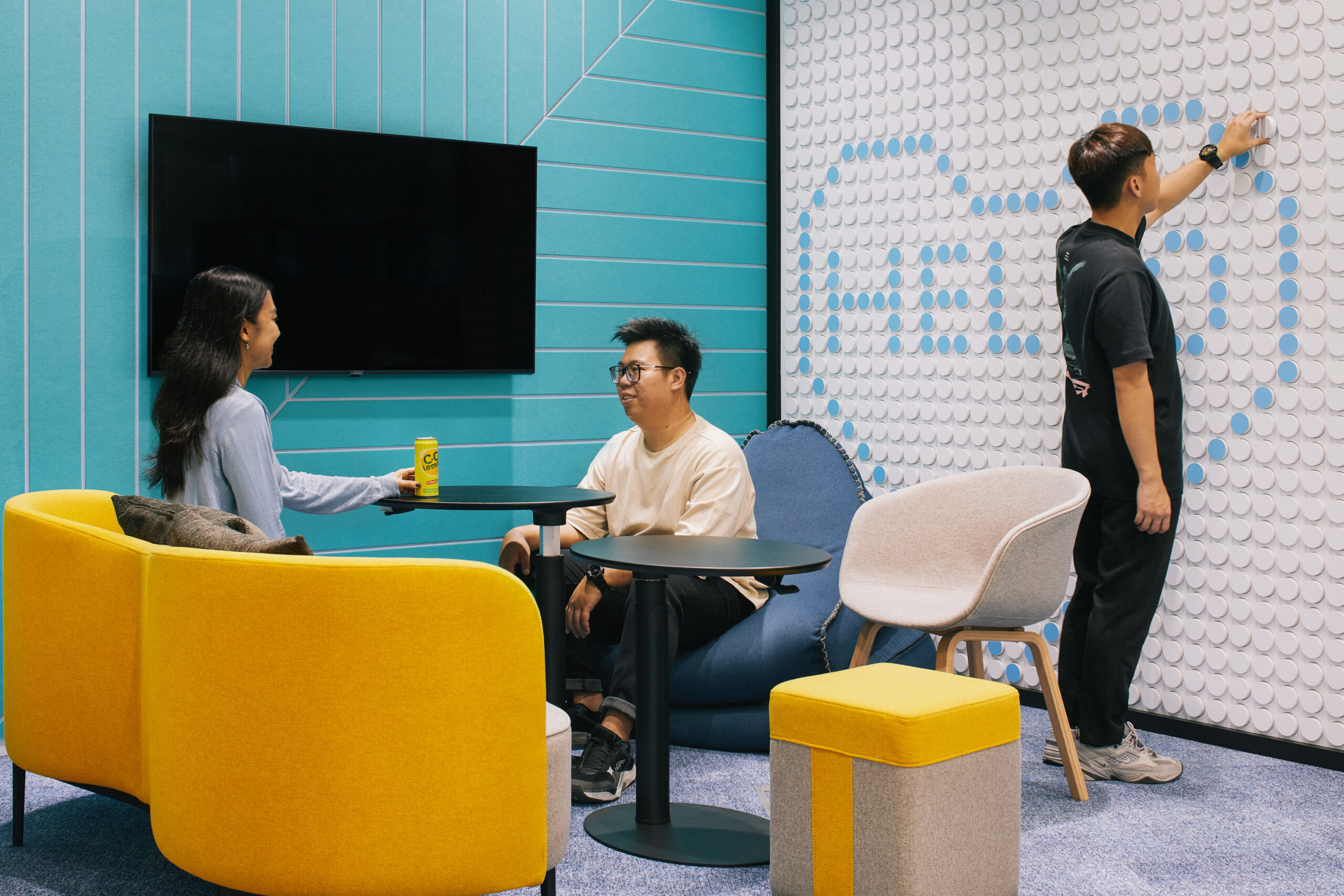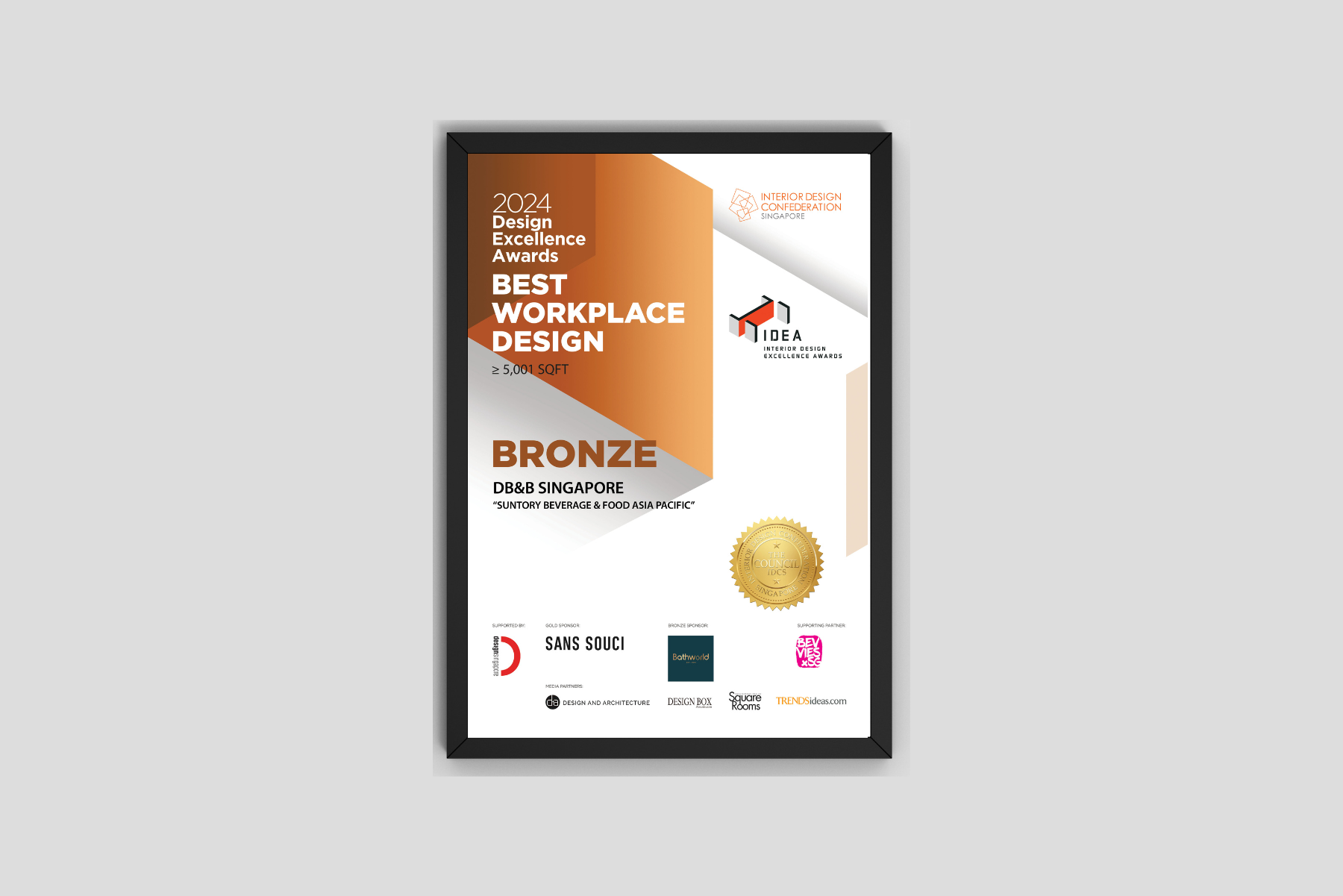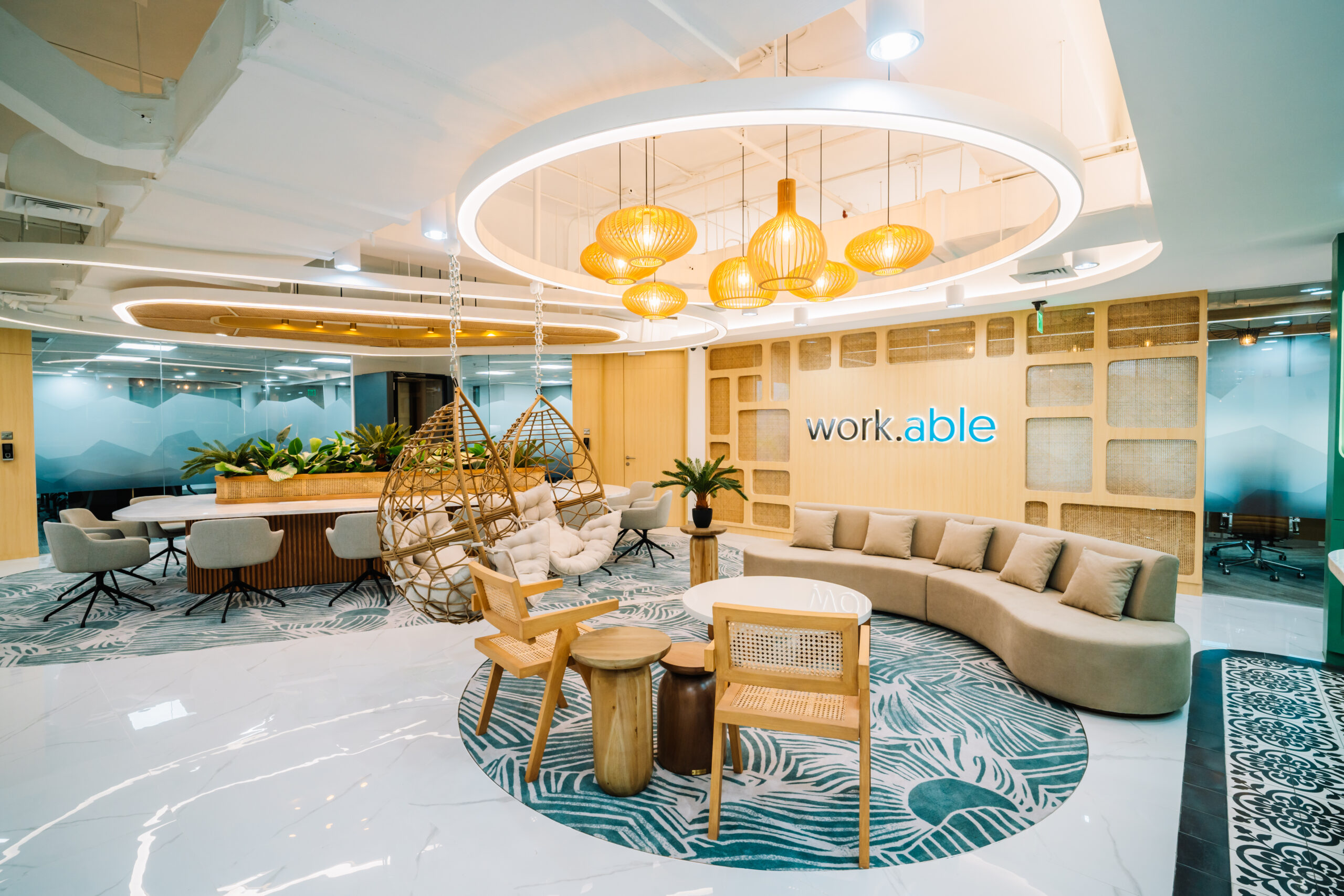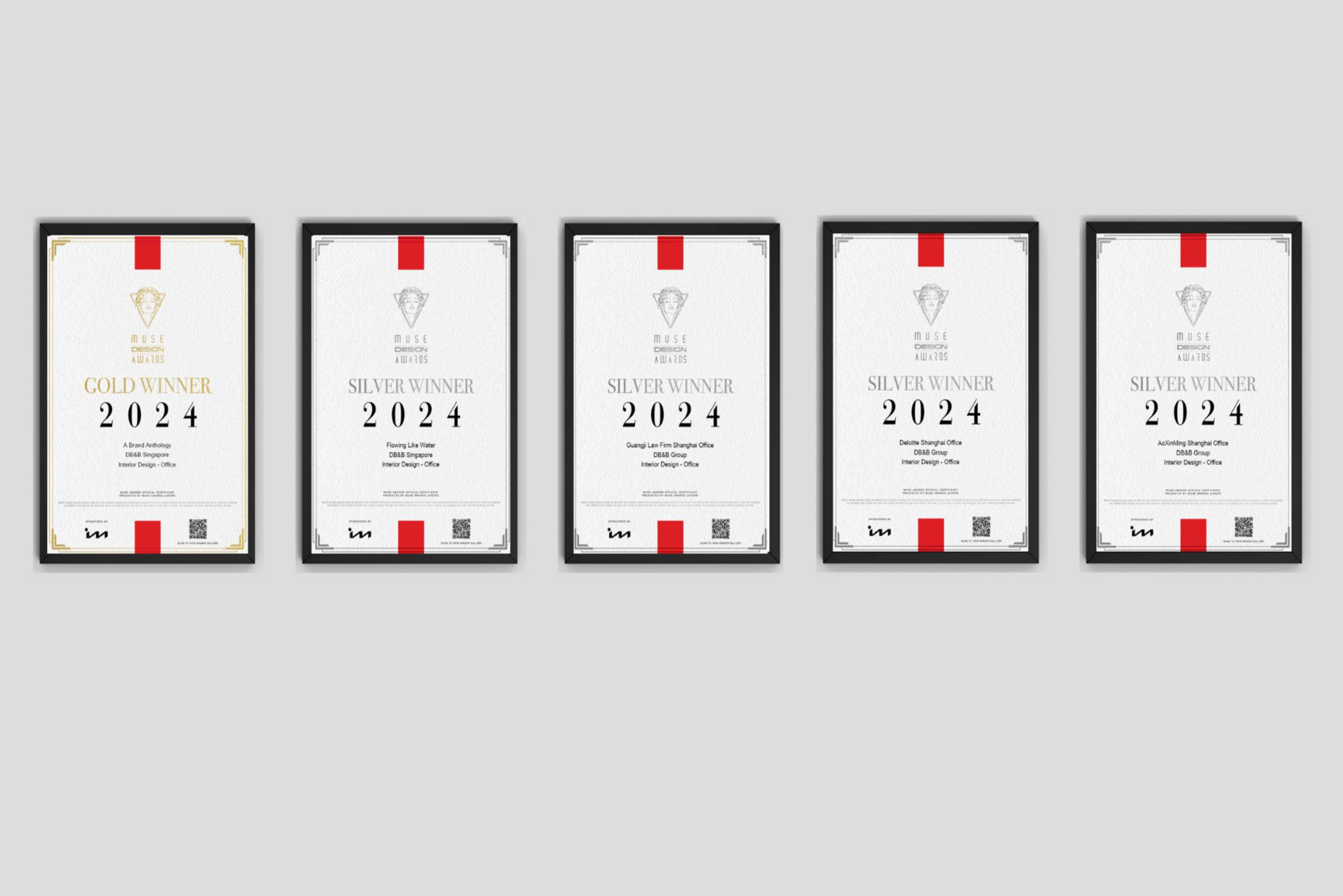Top Trends in Agile Office Space Design for Modern Workplaces
Turning offices into a productive space that promotes flexible working is the absolute business need nowadays, especially since the COVID-19 pandemic. Agile office space design is the ideal avenue to fulfil that and make you adaptable to changing team needs.
In this article, we take you through the necessities of an agile working space including the key elements of designing it and the organisational benefits you can reap. Let’s take a look at what makes an office agile, enhancing collaboration and productivity.
Key Takeaways
- Agile office space design emphasises flexibility and adaptability, offering diverse spaces such as open-plan areas, quiet zones, and breakout spaces to cater to various work styles and tasks.
- Key elements of an agile workspace include hot-desking, modular furniture, and smart office solutions, which enhance collaboration and coordination, making the office more efficient and productive. It provides all the necessary support to make a workforce hybrid and remote work friendly.
- You can face challenges like high initial costs and workers resisting the change while implementing an agile office but it can be mitigated if you involve the employees in the process and strategically plan every move, making room for constant evaluation.
Defining Agile Office Space Design
Almost all companies follow an agile working principle characterised by an agile office space design which supports flexibility. But what does it mean to have such a place? Agile office designs are not restricted to the aesthetic upliftment of the workspace. It stands for the shift in workplace ethos and culture which have been seen since the pandemic.
Today’s work environment philosophy is towards agile working where the needs of employees go beyond salary and increments. They want a more flexible work set-up that balances their personal and professional life. So, the number one definition of such an office design is accommodating the changing dynamics of the work culture by including things like
- Resimercial Design (a blend of commercial and residential elements),
- Open spaces ensuring privacy (quiet rooms, soundproof booths),
- Movable furniture, partitions,
- Spaces to enhance well-being (gyms and meditation rooms).
Although the origin of this concept dates back to the mid-90s when the software development boom started, the flexibility and adaptability of agile working are being recognised now, especially since the COVID-19 pandemic hit the world. The objective of such spaces is clear – to boost employee well-being and engagement and how it has helped companies to sustain growth.
Key Characteristics of Agile Workspaces
An agile workspace, the chameleon of the modern office landscape, champions flexibility, offering a variety of spaces—from open collaborative areas to quiet zones and breakout spaces—that cater to different work styles and tasks. These dynamic spaces encourage a culture of open communication and rapid adaptation, allowing teams to break free from the shackles of restrictive processes and embrace agile working that promotes a better work-life balance.
Differences Between Agile and Traditional Office Layouts
Agile office layouts counter the one-size-fits-all approach of traditional offices. They prioritise collaboration, adaptability, and a hybrid workplace that supports a flexible workforce. An agile workplace promotes operational agility by not following the rigid structure of traditional offices like formal meeting rooms, cubicles and private cabins having standard furniture and artificial lighting.
An agile workplace layout is a unique design personalised according to the needs of the employees and employers of that office, which promotes flexible working. It is functionally fit for all roles and does not tie the business to a fixed operational schedule or location.
Essential Elements of an Agile Workspace
The cornerstone of an agile workspace is its versatile and accommodating nature. The agile workplace works like a jigsaw puzzle that plans for open areas, quiet zones, and breakout spaces in the design layout, catering to the diverse needs and preferences of the workers.
Here’s a look at the key elements that significantly enhance the work environment of an office, making it an agile workplace.
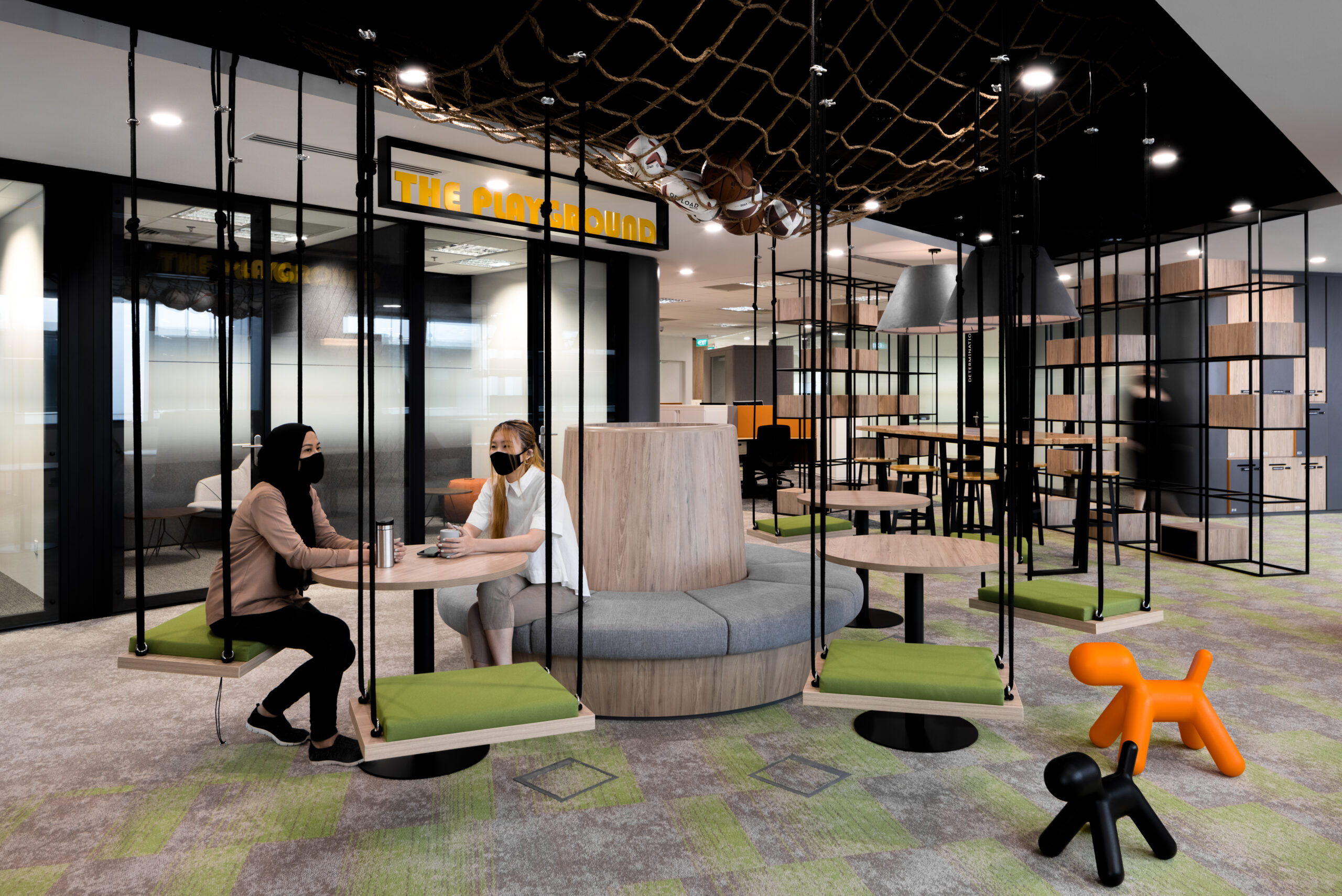
Open Plan Areas
When it comes to designing an agile workspace, open-plan areas are in the foreground of collaboration as they are designed to:
- Dissolve the barriers that inhibit the free flow of ideas
- Encourage employees to engage in dynamic interactions and spontaneous group meetings
- Create a space where creativity thrives
- Foster a culture of collaboration
In these spaces, employees are encouraged to work together and share ideas, leading to increased productivity and innovation.
Quiet Zones
If you are looking to convert your office into an agile working set-up, then you need to invest in quiet zones which serve as sanctuaries of solitude, promoting privacy.
A quiet zone in an agile workplace should have the following features:
- Acoustic wall panels and ceilings to minimise noise pollution
- Carpets, rugs, and fabric-covered furniture to dampen sound
- Clean lines and subdued colours to reduce visual clutter
- Walls or partitions to create physical separation from high-traffic areas and collaborative zones
- Neutral colours and natural elements like indoor plants for a tranquil environment with better air quality.
An agile workplace comes equipped with soundproof booths or individual pods, ensuring that the open plan’s vibrancy does not interrupt the need for privacy and deep focus.
Breakout Spaces
Breakout spaces, the Swiss Army knife of the agile office where employees can indulge in activities like:
- Brainstorming sessions
- Relaxed meeting
- Casual coffee conversations
- Relaxed solo work that needs focus
These spaces foster agile working as they help in establishing an informal connection amongst people, making way for collaboration and sparking innovation.
Designing for Flexibility and Adaptability
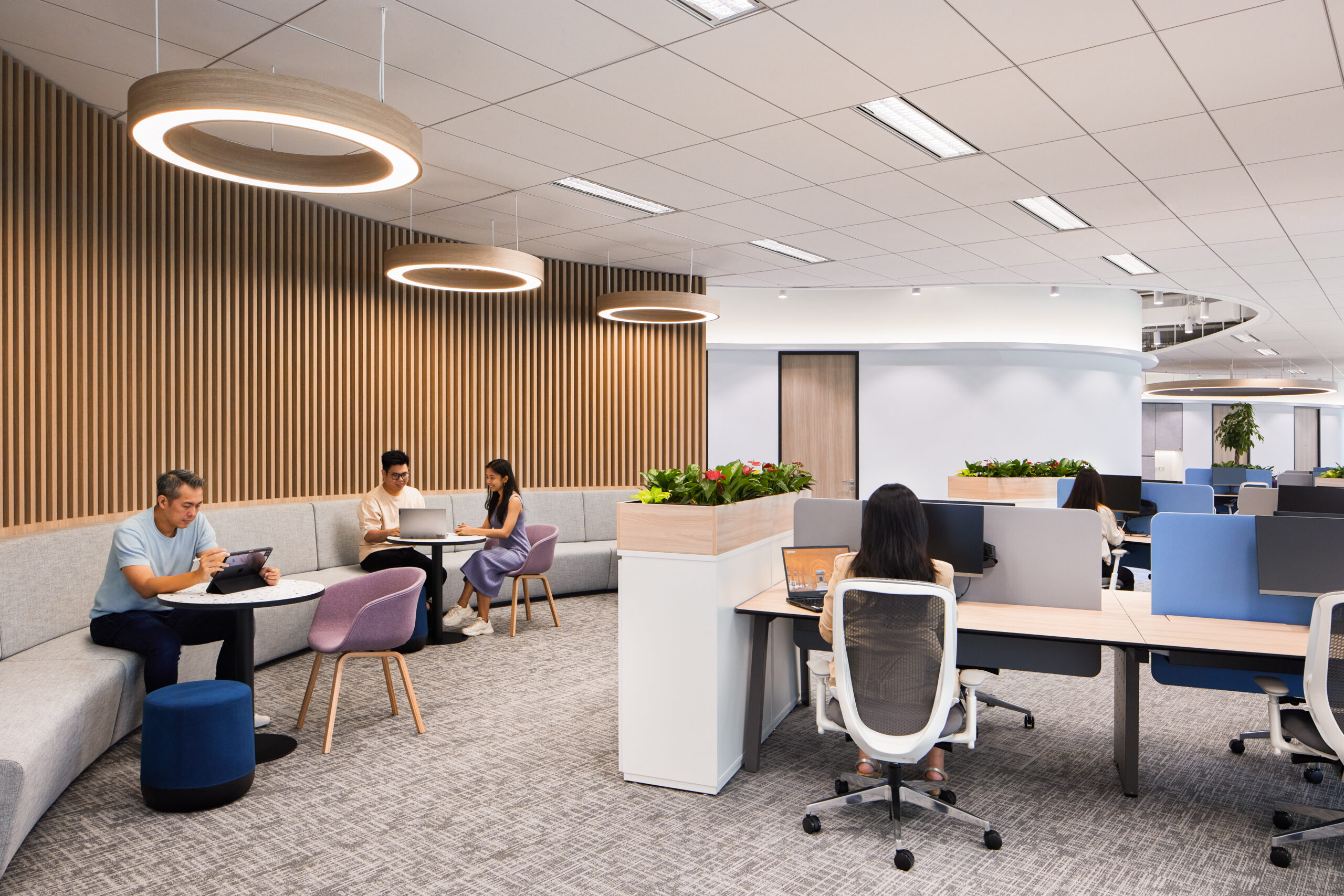
Agile office design advocates for change, aiming to create a workspace that anticipates and adapts to the ever-evolving needs of the users with features like:
- Hot desking
- Free address seating
- Modular furniture
- Movable walls
- Customised workstations
An agile workplace is built to support a hybrid working model in an agile environment that caters to a diverse and flexible workforce.
Hot-Desking and Free Address Seating
To build a flexible and agile working environment hot-desking and free address seating are needed as these practices let people from different departments mingle and also maximise space efficiency in the office. Such office space design supports agile working by fostering a change in the work environment, helping people gather perspectives.
Modular Furniture and Movable Walls
The most essential thing for an adaptable office is modular furniture and movable walls. They allow for a quick and easy reconfiguration of spaces to support solo activity or group meetings. This ensures that the workspace evolves alongside the team’s needs as it has features including:
- Desks and tables on wheels or lightweight desks
- Chairs, sofas, and benches that can be rearranged
- Desks, shelves, and storage units with interchangeable parts
- Chairs and tables that can be stacked or nested to save space when not in use
- Multi-functional furniture like ottomans with storage, foldable desks, or convertible sofa beds
- Walls that slide or fold to open up spaces
- Partitions in transparent (glass) or opaque (solid) materials to balance visibility and privacy
- Partitions with writable surfaces, such as whiteboards or chalkboards, to facilitate brainstorming and collaborative work
Customised Workstations
To promote an agile working environment offices must make room for customised workstations that are adjusted as per the needs of every employee. The following features could help in customising workstations:
- Height-adjusted work desks
- Ergonomic chairs that provide lumbar support for long hours of desk work
- Modular components to optimise the workflow of every individual
- Acoustic panels or desk dividers for visual privacy
- Multi-functional furniture like ottomans with storage, foldable desks, or convertible sofa beds
- Task lighting or adjustable desk lamps to reduce eye strain
- Anti-fatigue mats for standing desks
- Wobble stools for better standing posture and movement
Integrating Technology in Agile Office Design
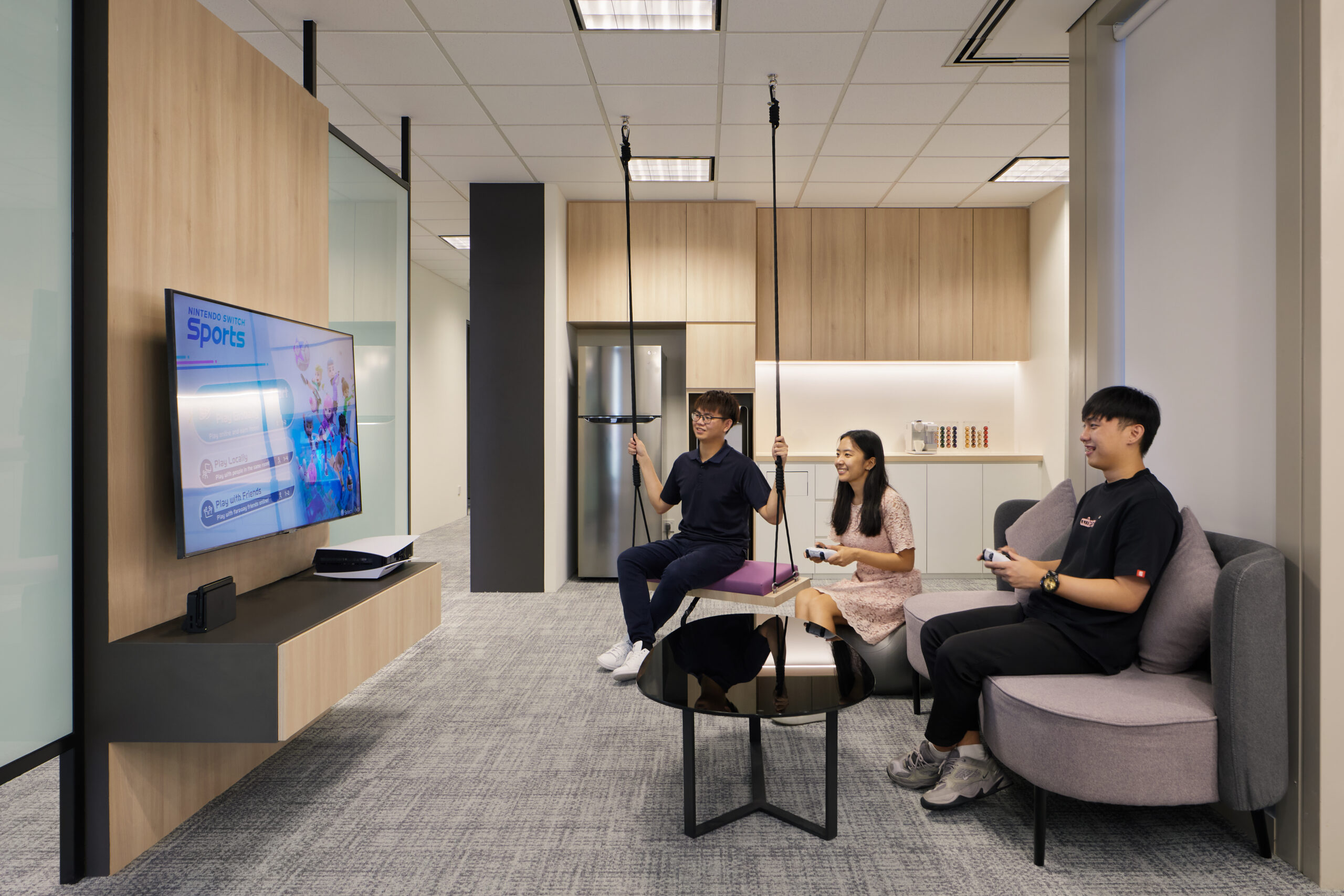
Technology, in an agile office, is the unseen thread weaving together productivity and collaboration. Smart office solutions and collaboration tools are integrated into the design to ensure that employees are well-connected to resources and teammates whether they are working away from the office or in-office.
Smart Office Solutions
The central nervous system of an agile office are smart office solutions, as it provides real-time occupancy data and facilitates seamless management of desks and meeting rooms. These systems automate mundane tasks and offer insights that can help in cost savings and enhance office inventory and elements use. Including the following features will help in this process:
- IoT-enabled devices like automated lighting systems, smart thermostats and HVAC systems
- Digital interactive whiteboards and communication tools that integrate messaging, video conferencing
- Room occupancy sensors and smart room booking system to help employees reserve rooms for meetings
Collaboration Tools
Collaboration tools narrow the gap created by physical distances, guaranteeing that both remote and in-office workers stay equally engaged and connected. From high-quality conferencing equipment to shared digital workspaces, these tools embody the essence of agile and flexible working, allowing team members to collaborate effectively, regardless of their location.
Benefits of Agile Office Space Design
The adoption of an agile office design yields numerous benefits like enhanced collaboration, increased productivity, improved employee satisfaction, and higher employee retention that goes beyond aesthetic appeal.
Enhanced Collaboration and Communication
Agile workspaces are designed to enhance collaboration and communication. They achieve this by:
- Removing physical barriers
- Providing a variety of collaborative spaces
- Encouraging spontaneous interactions
- Leading to innovative solutions
- Creating a stronger sense of team unity
Increased Productivity and Efficiency
The flexibility of agile working space allows employees to tailor their workspaces to the task at hand, which can lead to increased productivity and efficiency. Being able to transition smoothly between collaborative and focused work can significantly boost output and speed up project completion.
Improved Employee Satisfaction and Retention
Agile office designs contribute to improved employee satisfaction and retention by offering a work environment that respects individual preferences and promotes a healthy work-life balance. The autonomy to choose when, where, and how to work can lead to higher job satisfaction, ultimately benefiting the organisation through increased loyalty and reduced turnover.
Challenges and Solutions in Implementing Agile Office Design
Adopting an agile office design is not an easy task as the path towards agile working is filled with challenges like high costs and the employees’ resistance to change.
Companies must navigate through this by planning and communicating with the workers as most of them are prone to oppose new changes, assuming it will take their jobs.
Resistance to Change
Opposing changes is a natural human tendency and workers are not privy to that. However, an agile transformation supported by educating measures that foster an understanding of the values and benefits of agile practices can greatly help in the process. The only way to achieve this is to provide tools and resources to the employees during the transition period, making it easier for them to adapt to the changes. Train them to use the new workplace designs and tools that you are going to include in the agile office layout rather than just imposing it on them.
Cost Considerations
The long-term savings of an agile workplace outweigh the initial costs of redesigning as it makes way for space efficiency and resource optimisation. Smart office designs can lead to significant cost savings by adapting to actual needs and reducing wastage.
Best Practices for Transitioning to an Agile Office
Creating an agile office requires a thorough approach where you need to build a viable strategy that integrates employee feedback and continuous adaptation of processes. This requires following a set of best practices like involving the employees in the project and continuous evaluation of the design as it ensures a smooth shift to an agile working environment.
Involving Employees in the Design Process
Designing is the most critical phase of office space development and employee involvement at this stage addresses functional loopholes. With the help of their input, you can design a workspace that meets their work environment needs, making it easier for them to complete tasks, ultimately enhancing their speed and accuracy.
Continuous Evaluation and Improvement
You might think designing an agile office is a one-off task which can be done in one sitting. In reality, it is a developing process which needs constant monitoring and feedback to make the layout more functional and practical. Hence constant evaluation and enhancement from data-driven insights and employee feedback is the key to optimising a workplace for an agile working transition.
Frequently Asked Questions
What is the main goal of an agile office space design?
An agile office space design has the primary goal of optimising workspaces by making them flexible, adaptable, and more employee-centric so that it fosters productivity and collaboration.
How do agile workspaces differ from traditional office layouts?
Unlike traditional office layouts, agile workspaces promote a free-thinking environment with open-plan areas, quiet zones and breakout spaces which support different work styles and the changing dynamics of tasks.
Can small businesses benefit from agile office designs?
Yes, small businesses can benefit from agile office designs by gaining flexibility, collaboration opportunities, and employee satisfaction, similar to larger corporations.
What are some challenges of transitioning to an agile office design?
Like any other transition, this too is met with resistance from employees and high costs of designing. However, with proper communication and feedback from the workers, the designs can be evaluated regularly, resulting in better planning focused on long-term benefits.
How important is technology in an agile office design?
Technology like collaborative tools, IoT-enabled devices etc provide the necessary infrastructure for seamless communication and collaboration, ensuring remote and in-office workers have access to resources for effective teamwork.
